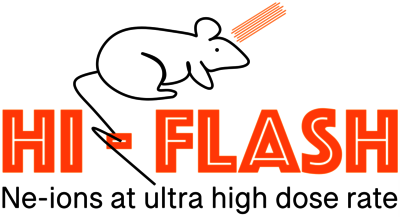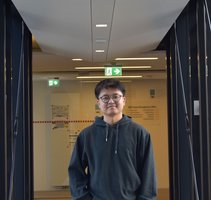HI-FLASH

Charged particle therapy is generally acknowledged as the most advanced type of radiotherapy (RT). Particle therapy patients are treated either with high-energy protons or 12C-ions, but there is a general agreement that heavier ions would be highly beneficial in treating extremely resistant, hypoxic and lethal tumors, such as glioblastoma (GBM). Unfortunately, the use of very heavy ions is constrained by their excessive normal tissue toxicity.
A way to enable very heavy ion therapy with acceptable toxicities is to make use of the recently discovered FLASH effect. This effect occurs when ultra-high dose-rate (UHDR) electrons or protons are used and results in significantly sparing the normal tissues whilst maintaining tumour control. Although the molecular mechanism is still unclear, the FLASH effect considerably broadens the therapeutic window and has proven to be a game-changer in radiotherapy. While my group at GSI has pioneered the first demonstration of the FLASH effect with high-energy carbon ions, UHDR use of even heavier ions can be safe and very effective for very resistant tumor.
GSI is the only facility world-wide where the FLASH effect can be explored with ions heavier than carbon. In fact, the GSI synchrotron can accelerate all ions for H to U up to very high energy and intensity, and my group has developed a unique technology to perform 3D conformal UHDR irradiation using 3D-printed range modulators. We will perform UHDR irradiation experiments with 20Ne-ions using a GBM rat model and will compare survival, toxicity and tumour control with the same ion at conventional dose-rate and with UHDR protons as a reference. If successful, HI-FLASH will pave the way for the use of heavy ions in cancer treatment, improving outcomes for patients with highly resistant and lethal tumors like GBM.
Links
- Reports
- Publications
- Presentations
- Thesis
- Abstracts
- News
People
Principal Investigator

Prof. Marco Durante, Ph.D.
Biophysics Department, Director
GSI Helmholtzzentrum für Schwerionenforschung
M.Durante(at)gsi.de

Dr. Jeannette Jansen
GSI Helmholtzzentrum für Schwerionenforschung
Biophysics, Space Radiobiology
j.jansen(at)gsi.de

Dr. Olivia Drayson
GSI Helmholtzzentrum für Schwerionenforschung
Biophysics, Space Radiobiology
o.drayson(at)gsi.de

Kai Wen, MSc
Technical University of Darmstadt
GSI Helmholtzzentrum für Schwerionenforschung
Biophysics, Space Radiobiology
kai.wen(at)stud.tu-darmstadt.de







